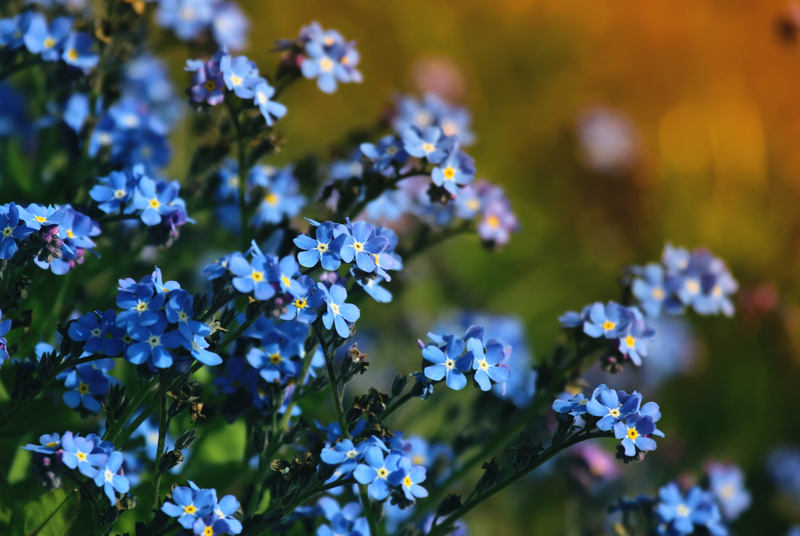How to Maintain a Vibrant Lawn During Intense Summer Droughts
As temperatures rise and rainfall decreases, homeowners face the significant challenge of keeping their lawns vibrant during the hottest months. Intense summer droughts can turn lush, green turf into dry, brown sod if not managed properly. With the right strategies, you can protect your grass and ensure it thrives, even under the harshest conditions. This comprehensive guide offers proven tips and expert advice for maintaining a vibrant lawn during drought and will help you sustain an oasis of green when the mercury soars.
Understanding the Impact of Drought on Your Lawn
Before diving into maintenance methods, it's vital to understand how intense summer droughts impact lawns.
- Water stress: Lawns need water for photosynthesis. Lack of moisture causes grass to wilt, turn brown, or enter dormancy.
- Soil compaction: Dry conditions harden the soil, restricting root growth and further reducing water absorption.
- Increased susceptibility to pests and diseases: Stressed turf is more likely to suffer disease or be invaded by insects.
- Reduced nutrient uptake: Grass roots struggle to access crucial nutrients in dry soils.
Knowing how drought affects your lawn helps you take proactive steps to keep grass green during drought.

Choosing the Right Grasses for Drought Resistance
One of the best ways to maintain a vibrant lawn during summer drought begins before any heat waves arrive: select the right grass type.
Best Drought-Tolerant Grass Varieties
- Bermudagrass - Extremely heat tolerant and recovers quickly.
- Zoysiagrass - Dense, slow-growing, and highly drought resistant.
- Buffalograss - A native prairie species needing minimal irrigation.
- Tall Fescue - Deep roots make it more drought-hardy than other fescues.
Consider overseeding your lawn with these drought-tolerant varieties to give your turf a better chance in severe droughts.
Watering Strategies for Intense Summer Droughts
Proper watering is key to lawn drought maintenance. Careless or ineffective watering can waste resources and even harm your yard.
Smart Watering Techniques
- Water deeply but infrequently: Encourage deep root growth by watering thoroughly but less often. Early morning is best to reduce evaporation.
- Aim for 1 inch per week: During a drought, measure rainfall plus irrigation. Adjust as necessary for severe conditions.
- Soaker hoses and drip irrigation: These deliver water directly to roots, minimizing evaporation vs. sprinklers.
- Check irrigation systems: Regularly inspect for leaks and misaligned nozzles to prevent waste.
Avoid watering in the heat of the afternoon, as much of the water will evaporate before it reaches the soil.
Embrace Lawn Dormancy During Extreme Drought
If your area faces strict water restrictions, you may need to let your lawn go dormant. Many grass types can survive weeks or even months of drought-induced dormancy with minimal watering--aim for about 1/2 inch every 3-4 weeks just to keep the roots alive. Once rain returns, your lawn should recover.
Mowing Tips to Protect Your Drought-Stressed Lawn
- Raise your mower blade: Taller grass shades roots and retains moisture. Cut cool-season grasses to 3-4 inches and warm-season to 2-3 inches during drought.
- Never cut more than 1/3 of grass height: Severe mowing stresses turf and exposes soil.
- Leave grass clippings: They return moisture and nutrients to the soil.
Proper mowing helps you maintain a lush lawn during drought by preventing further stress.
Soil Care and Lawn Aeration
Compacted, dry soils prevent water penetration and root growth. Aeration is a must for summer lawn care in drought-prone areas. Aerate your lawn at least once a year, ideally in spring or fall, to increase air space and water infiltration.
- Core aerators are best for removing plugs of soil and allowing air, water, and nutrients to reach the roots.
- Top dress with compost or fine composted mulch after aeration to lock in moisture and improve soil structure.
- Test your soil: Diagnosing pH and nutrient deficiencies helps you make targeted amendments.
Mulching for Maximum Moisture Retention
Mulch isn't just for flower beds. For vibrant drought-resistant lawns, consider the following:
- Use organic mulches around lawn edges and garden beds to slow evaporation and keep roots cool.
- Mulching tree rings and around shrubs protects roots during dry spells.
- Grass clippings serve as "living mulch" when left on the lawn after mowing.
Fertilization: Less Is More During Drought
While fertilizing provides essential nutrients, reduce or eliminate fertilizer application during intense droughts. Excess nitrogen can stress turf by encouraging lush, tender growth when the grass is struggling to survive.
- Fertilize in spring or fall, when moisture is abundant.
- Apply a slow-release, organic fertilizer if needed.
- Avoid "weed & feed" products in hot, dry weather.
Smart fertilization is crucial for lawn care during summer drought.
Dealing With Weeds and Lawn Pests During Summer Drought
Drought-stressed grass leaves spaces for weeds to exploit. Stay on top of invasive plants and pests with these key steps:
- Hand-pull weeds rather than using herbicides, which can further stress your grass.
- Check regularly for signs of chinch bugs, grubs, or fungal infections, and treat early to prevent widespread damage.
- Healthy turf is the best weed and pest defense, so prioritize overall lawn care during droughts.
Overseeding, Re-seeding, and Lawn Renovation
Once drought conditions subside, some areas may need repair. Overseed bare spots with drought-tolerant seed blends in late summer or early fall for best results. Top-dress with compost to retain moisture and protect new sprouts.
Alternative Landscaping: Reducing Lawn Areas for Drought
If droughts are a recurring challenge in your region, consider water-wise landscaping:
- Replace portions of turf with drought-tolerant groundcovers, ornamental grasses, or native plants.
- Create mulched pathways or decorative rock areas to reduce thirsty lawn real estate.
- Utilize rain gardens, which take advantage of occasional storms to fill low spots with attractive, deep-rooted plants.
Seasonal Lawn Preparation for Summer Droughts
The health of your summer lawn begins well before the first heatwave. Prepare your landscape:
- Dethatch in spring to improve water infiltration.
- Aerate and reseed with drought-hardy varieties.
- Apply wetting agents or soil conditioners to help water penetrate hard soils.
- Mulch beds and hedges before summer begins.
Conserving Water in the Landscape
During severe droughts, municipal water restrictions often come into play. Here's how you can conserve water while still keeping your lawn healthy:
- Collect rainwater in barrels for hand-watering critical spots.
- Install smart irrigation controllers that adjust watering schedules automatically.
- Water only early in the morning to maximize efficiency.
- Consider greywater systems for landscape irrigation (where local codes allow).
Signs of Lawn Recovery After Drought
As temperatures moderate and rainfall returns, a dormant but healthy lawn will show signs of new growth. Here's what to look for:
- Green shoots appear first in low or shaded spots.
- Slow, steady regrowth resumes across the lawn--patience is key!
- Aerate, fertilize, and overseed any dead patches.
Avoid overwatering or over-fertilizing after drought, as stressed grass needs time to recover.

Frequently Asked Questions About Maintaining Lawns in Drought
How often should I water my lawn during a drought?
Aim to water deeply--about 1 inch per week if possible. If water restrictions are in place, focus on watering only when absolutely necessary to keep the roots alive.
Should I mow my grass during drought?
Yes, but always set your mower higher and never cut more than one-third of the height at a time. Avoid mowing during the hottest part of the day.
Is it possible to keep a perfectly green lawn through an intense drought?
With the right drought-tolerant grass, smart watering, and diligent care, your lawn can remain healthy and vibrant. However, some browning or dormancy may occur during the hottest, driest spells and is a natural survival mechanism.
When should I fertilize after a drought?
Resume light fertilization once conditions improve (cooler temperatures, more moisture). Always follow up with deep watering.
Conclusion: Keeping Your Lawn Vibrant Through the Worst of Summer
Caring for your lawn during an intense summer drought requires a strategic blend of preparation, regular maintenance, and smart water use. By choosing drought-tolerant grasses, deepening roots, mulching, mowing properly, and preparing your soil, you can minimize damage and encourage quick recovery.
Remember, long-term drought resilience is built over years. By adopting eco-friendly lawn care practices now and making incremental adjustments, you'll enjoy a more beautiful and sustainable yard--no matter how hot the summer gets.
If you're facing another scorching season, apply these expert tips and enjoy the satisfaction of maintaining a lush, healthy, and green lawn during even the most severe droughts.